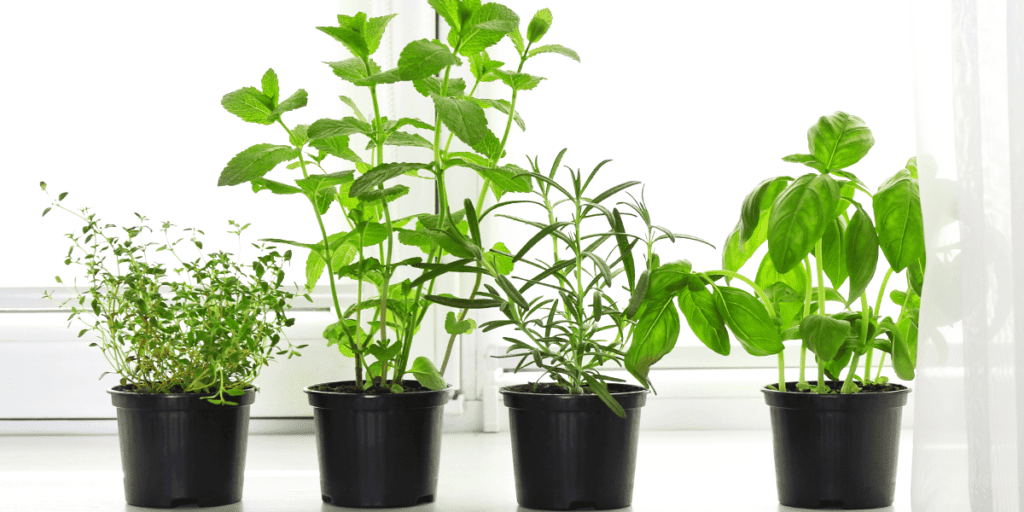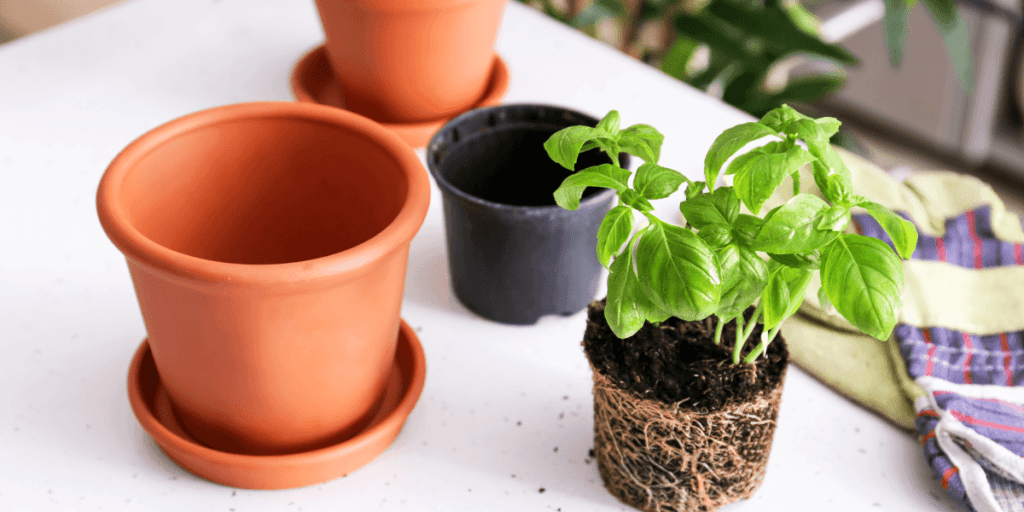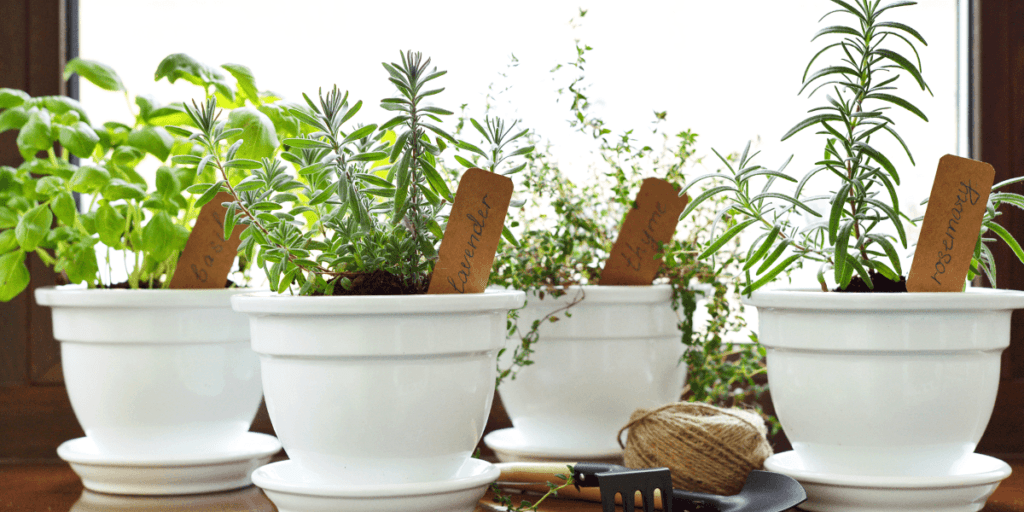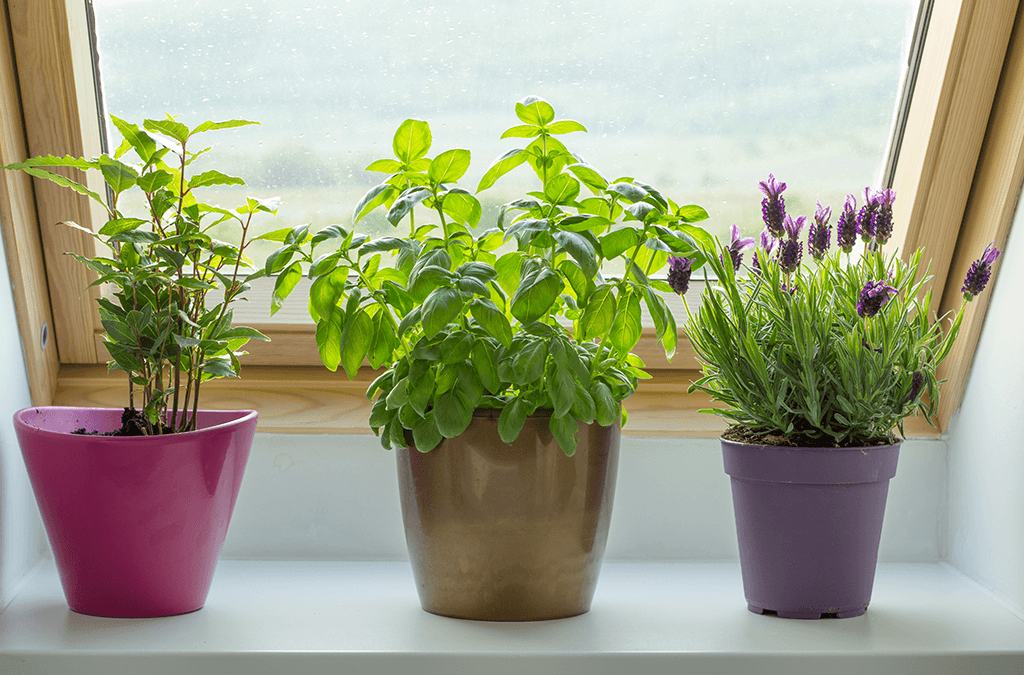How do you care for herbs inside? It seems simple, but oftentimes, we’re left with spindly, weak plants that don’t have much flavor. Here are tips to make your kitchen herbs strong, flavorful, and healthy throughout the winter and the whole year!
1. More Light, More Taste
Winter darkness may be the biggest obstacle to caring for kitchen herbs. You might see them reaching toward the window and getting leggy, resulting in lots of stems, but not a lot of leaves. If you see this happening, it’s best to move them to a spot with more light. In fact, the more light the better, as sunshine makes the flavors more vibrant. Most herbs like 6-8 hours per day.

2. Keep the Right Temperature
Most kitchen herbs thrive in temperatures of 60-70 degrees. If the conditions are too cold, you won’t see much growth. Likewise, a draft from an open door or furnace vent interferes with their ideal climate. Basil is one herb that thrives in slightly hotter temperatures, growing best at 75 degrees. If possible, find locations in your house where they’ll stay within the optimal range.
3. Water Slowly, Thoroughly, and Infrequently
You don’t want to rush your watering of herbs, as the water can quickly pass through the soil without the roots getting any. So use some care, take your time, and make sure you give them a thorough soaking. Usually, 2-3 times per week is enough. If they need daily watering, it may be a sign that the pot is too small, or the humidity in your house is too low. Letting some, but not all, of the soil dry out in between watering encourages deeper rooting, which is good for the herb.
4. Fertilize Occasionally
A slow-release organic fertilizer helps replenish the soil as the herbs grow. Aim to fertilize them once every six weeks. If you see salt build up around the top of the soil, flush it away with water under the sink.

5. The Right Size of Pot
You may have a surplus of extra pots hanging around during the winter. It can be tempting to use whatever you find for your herbs. However, a pot that’s too big can make watering a challenge. The soil won’t dry evenly, tricking you into giving water before the plant needs it, or waiting too long. On the other hand, a pot that’s too small discourages deep rooting and requires frequent watering. Instead, place the herbs in a pot that’s roughly the same size as the plant, with a few inches of growing room.
6. Simulate the Wind
Indoor herbs have a tendency to be weak. Even if you water them slowly, you’ll see the stems fold over as if they’ve just been hit with a rain storm. How do you make them stronger? Outside, the wind would do the job for you. Inside, you can simulate the wind by brushing your hands through the leaves every now and then. In response, they’ll strengthen their stems, making them more resilient and easier to harvest.

7. Breathing Room
Like garden plants outside, herbs need breathing room. If the tender leaves don’t get enough air circulation, you could be faced with mildew, pests, leggy plants, or weak leaves. To avoid the situation, make sure each herb has its own pot, and give them enough space for the moisture in the soil and leaves to evaporate.
8. Try Growing Herbs as Microgreens
Growing herbs in pots is the traditional way to care for herbs inside. In some ways, this method is simple and reliable. But to mix up your repertoire and even boost your productivity, you can try growing them in a tray as microgreens. Start a bunch of them as seeds and harvest them in a few weeks as they start to sprout. You’ll get copious amounts of fresh greens that have a punch of flavor and nutrition.
Platt Hill Nursery is Chicago’s premier garden center and nursery in the Chicagoland area.


